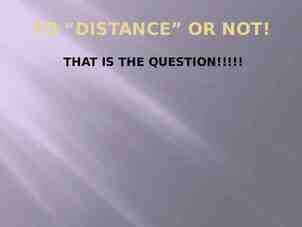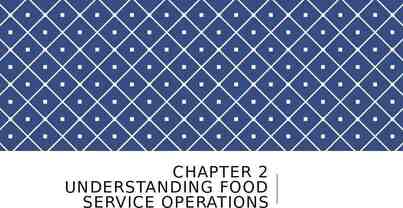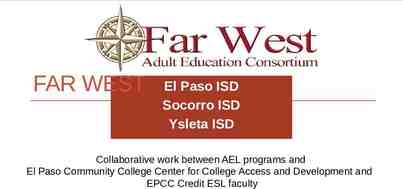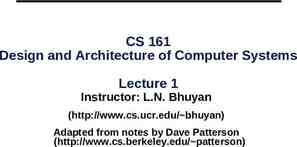Transmitted by chairman of IHRA/ITS Informal document No. ITS-19-08
13 Slides1.99 MB

Transmitted by chairman of IHRA/ITS Informal document No. ITS-19-08 ( 19th ITS, 11March 2011, Agenda item 5) Design Principles for Advanced Driver Assistance Systems: Keeping Drivers In-the-Loop IHRA-ITS UN-ECE WP.29 ITS Informal Group Geneva, March, 2011

Outline 1. Trends in driver assistance technology 2. Safety concerns 3. Design principles for control 4. Summary March 2011 International Harmonized Research Activities Working Group on ITS (IHRA-ITS) 2

Advanced Driver Assistance Systems Collision warning and automatic braking Adaptive front headlights Lane departure warning Lane keeping assistance Blind spot Driver monitoring Speed alert Assisted parking Overtaking assistance Signal violation warning . Cooperative systems V2V, V2I, V2X EU Project - Prevent March 2011 International Harmonized Research Activities Working Group on ITS (IHRA-ITS) 3

March 2011 4

Human Factors Needs Awareness and understanding of current system status Understanding of system functions and limitations Proper instructions, supporting materials and accurate marketing Optimal driver workload and task engagement Consistent ‘look and feel’ to limit interoperability issues Identify factors that affect appropriate trust and system reliance Design in fail-safe modes Identify potential unsafe side effects of behavioural adaptation and design for any reasonably foreseeable misuse. March 2011 International Harmonized Research Activities Working Group on ITS (IHRA-ITS) 5

In-the-Loop Performance In-the-Loop the driver is involved in the driving task and is aware of the vehicle status and road traffic situation. driver plays an active role in the driver-vehicle system. Out-of-the-Loop (potential negative consequence of automation) Reduced situational awareness - driver is not immediately aware of the vehicle and the current or developing road traffic situation. not actively monitoring, making decisions or providing input to the driving task. diminished ability to detect system errors and manually respond. March 2011 International Harmonized Research Activities Working Group on ITS (IHRA-ITS) 6

Overview of Control Principles The International Harmonized Research Activities (IHRA) working group on Intelligent Transport Systems (ITS) has been providing support to the UNECE WP.29 ITS Informal Group. The following draft control principles were prepared for WP.29. These basic principles are intended to identify automation issues and help to avoid drivers being out-of-the-loop and unprepared to manage safety-critical situations. The principles are structured in relation to Control, Operation and Display under Normal and Critical driving situations. Based on research evidence, international standards and best practices. March 2011 International Harmonized Research Activities Working Group on ITS (IHRA-ITS) 7

Scope of Control Principles These principles cover the basic driver interface and intervention capabilities for active vehicle control systems. These principles may also be relevant to automation that provides information and warnings to drivers. These principles apply to systems that support elements of the driver’s task. These principles also apply to systems that can actively change vehicle speed and direction. March 2011 International Harmonized Research Activities Working Group on ITS (IHRA-ITS) 8

Principles: Control Elements 1. Normal Driving Situations The driver should be able to easily and quickly override system actions at any time under normal driving situations and when crashes are avoidable. 2. Critical Driving Situations When the crash is determined to be unavoidable, the system can take actions to try to mitigate the crash severity. When a loss of control is determined to be unavoidable, the system can take actions to try to regain stability and control. When it determines that driver performance is impaired, the system can take actions to avoid or mitigate collisions. March 2011 International Harmonized Research Activities Working Group on ITS (IHRA-ITS) 9

Principles: Operation Elements For systems that control the vehicle under normal driving situations, the driver should have a means to turn it OFF manually and to keep the system in the OFF state. Drivers should be informed of the conditions that result in system activation and deactivation. Drivers should be informed of the conditions when system operation is different or is not guaranteed. March 2011 International Harmonized Research Activities Working Group on ITS (IHRA-ITS) 10

Principles: Display Elements It should be clear to the driver what assistance systems are installed on the vehicle. For systems that can be turned OFF, the driver should be able to easily determine the system state. The driver should be provided with clear feedback informing them when the system is actively controlling the vehicle. Drivers should be notified of any transfer of control between the driver and vehicle. If action is not available due to a failure, the driver should be informed. If symbols are used to notify the driver, a standard symbol should be used when available. March 2011 International Harmonized Research Activities Working Group on ITS (IHRA-ITS) 11

Summary Automation should provide users with safe, comfortable, convenient and efficient mobility. This document describes some of the human factors issues and needs associated with driving task automation. It sets out some basic principles that will help to optimize system performance and avoid drivers being out-of-the-loop and unprepared to manage safety-critical situations when they are needed. When the advanced driver assistance systems control or support elements of the driving task, drivers should be fully aware of the performance and limitations of those functions. These basic principles were prepared by the IHRA working group on Intelligent Transport Systems (ITS) to support the activities of the UNECE WP.29 ITS informal group. March 2011 International Harmonized Research Activities Working Group on ITS (IHRA-ITS) 12

Thank you March 2011 International Harmonized Research Activities Working Group on ITS (IHRA-ITS) 13






